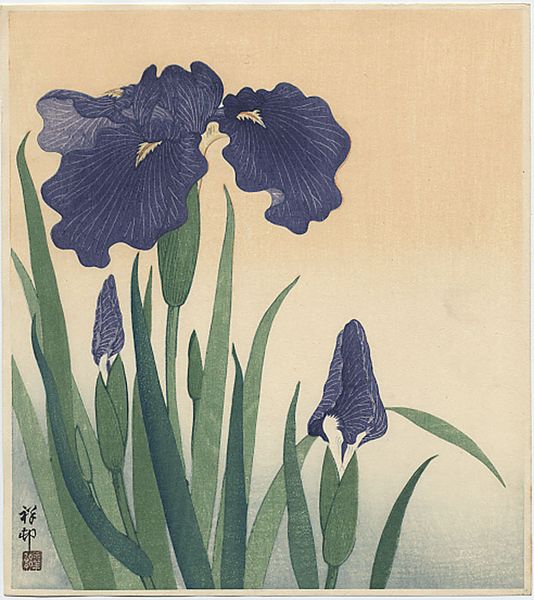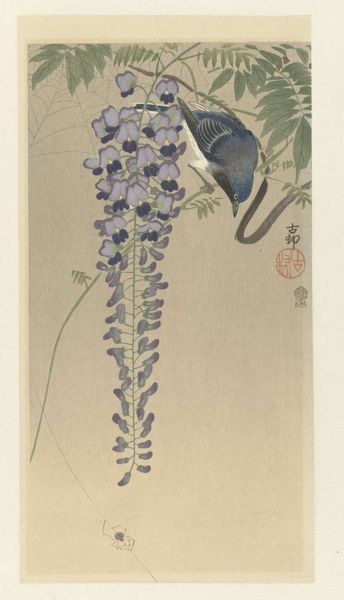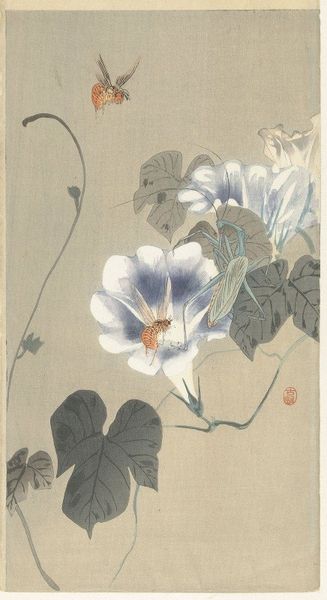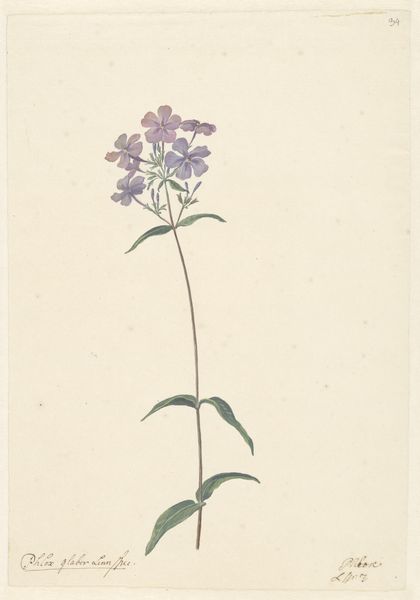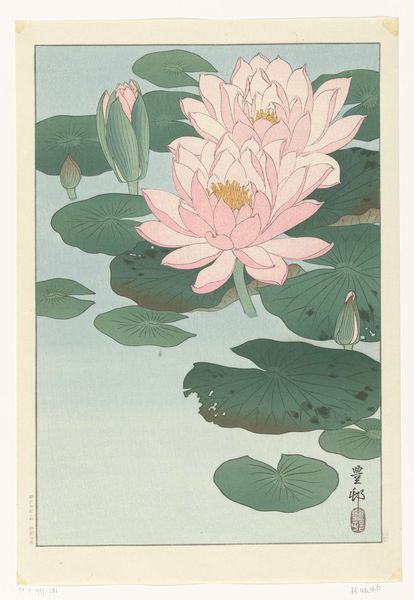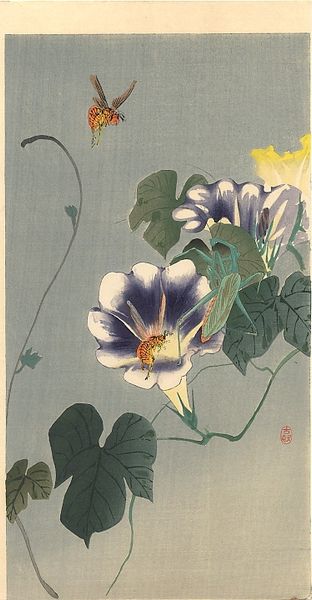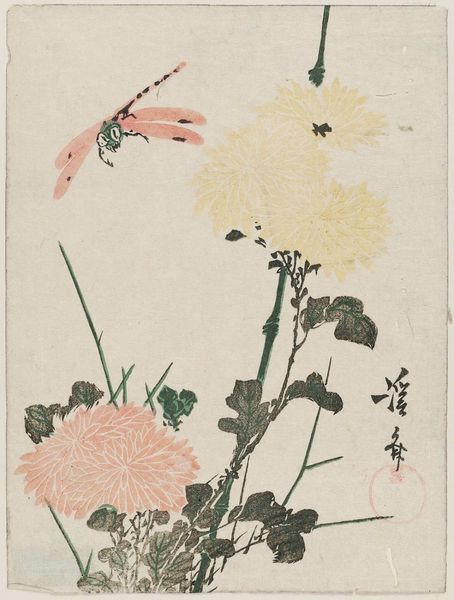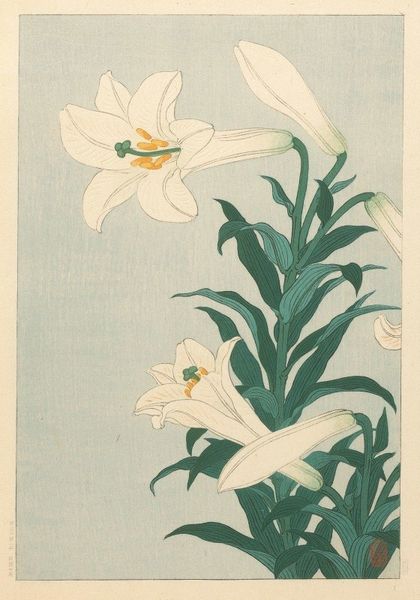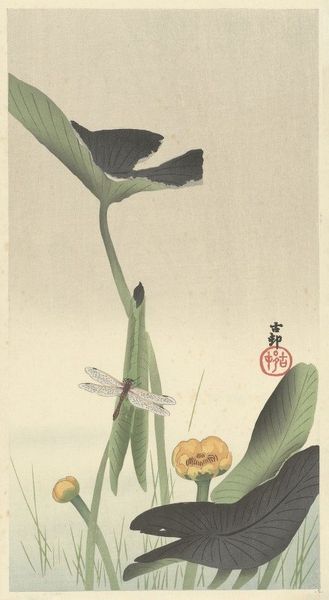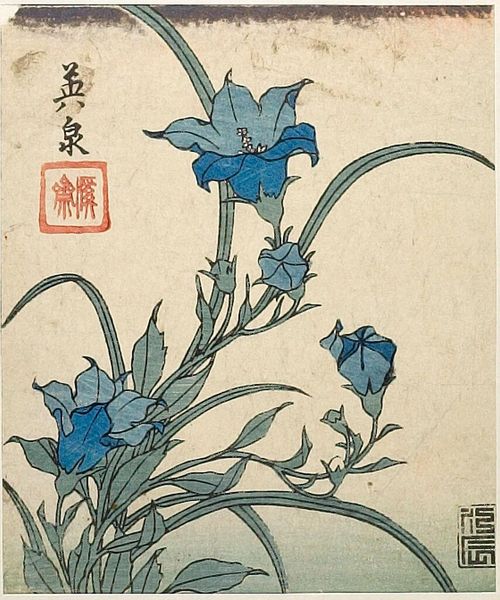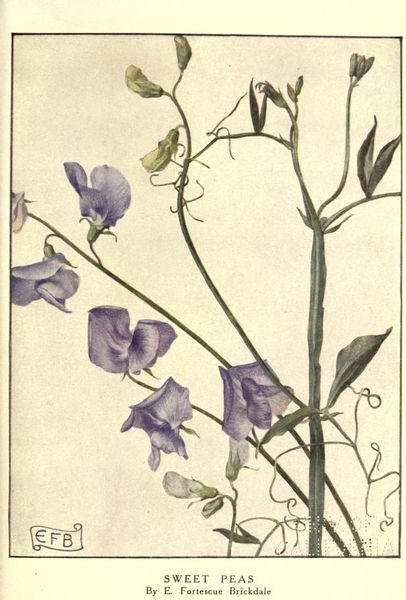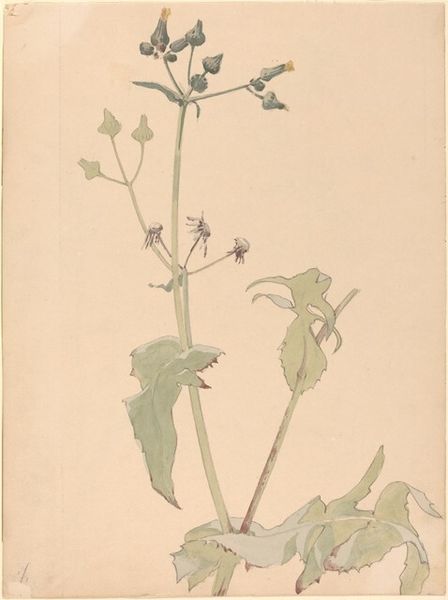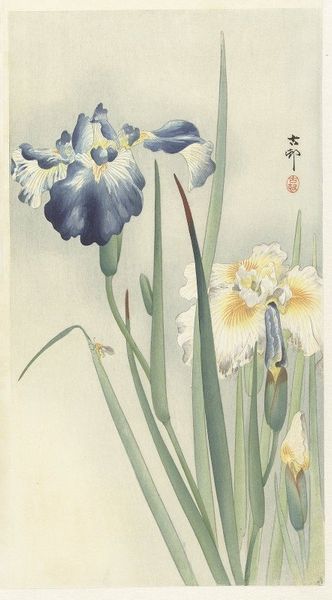
Copyright: Public Domain: Artvee
Editor: This woodblock print, "Flowering Hosta" by Ohara Koson, is dated somewhere between 1900 and 1930. It has such a serene, quiet feeling, even though the plant fills almost the whole frame. How do you interpret this work, beyond just being a pretty botanical study? Curator: It’s interesting you mention its serenity, because that’s something consciously constructed, I think. Japonisme was in full swing during that period. European artists appropriated Japanese aesthetics to challenge Western ideals about gender roles in art by redefining beauty. Koson's work is so simple, yet it disrupts established hierarchies in art; traditionally, landscapes, even floral ones, served as mere backgrounds. Why do you think focusing solely on this one plant challenges those established values? Editor: Well, making a ‘background’ element the subject emphasizes its value and demands that it be looked at with intention, regardless of perceived importance, perhaps advocating a sort of botanical equity? Curator: Precisely! It speaks to the value and the cultural weight of overlooked elements. The ‘feminine’ or decorative are dismissed as less meaningful within the Western cultural value system. Koson's intentionality draws from this thinking to engage in dialogue of social identity, gender, and perhaps, nature's power. Consider the asymmetrical composition; does this choice empower or liberate nature, and its cultural meaning, from the traditional male-dominated lens? Editor: I see what you mean! The off-center placement draws more attention and breaks from strict tradition. I hadn't thought of how Koson was pushing back against conventions through the lens of Japonisme in relation to the Western established hierarchies. Curator: Exactly, it's not just a peaceful image, it’s part of a bigger conversation of cultural perspectives and biases. Hopefully, it has opened another way to connect nature, philosophy, and culture. Editor: Yes, it's given me a completely new way of considering how we value subjects in art, and who gets to decide what’s important.
Comments
No comments
Be the first to comment and join the conversation on the ultimate creative platform.
